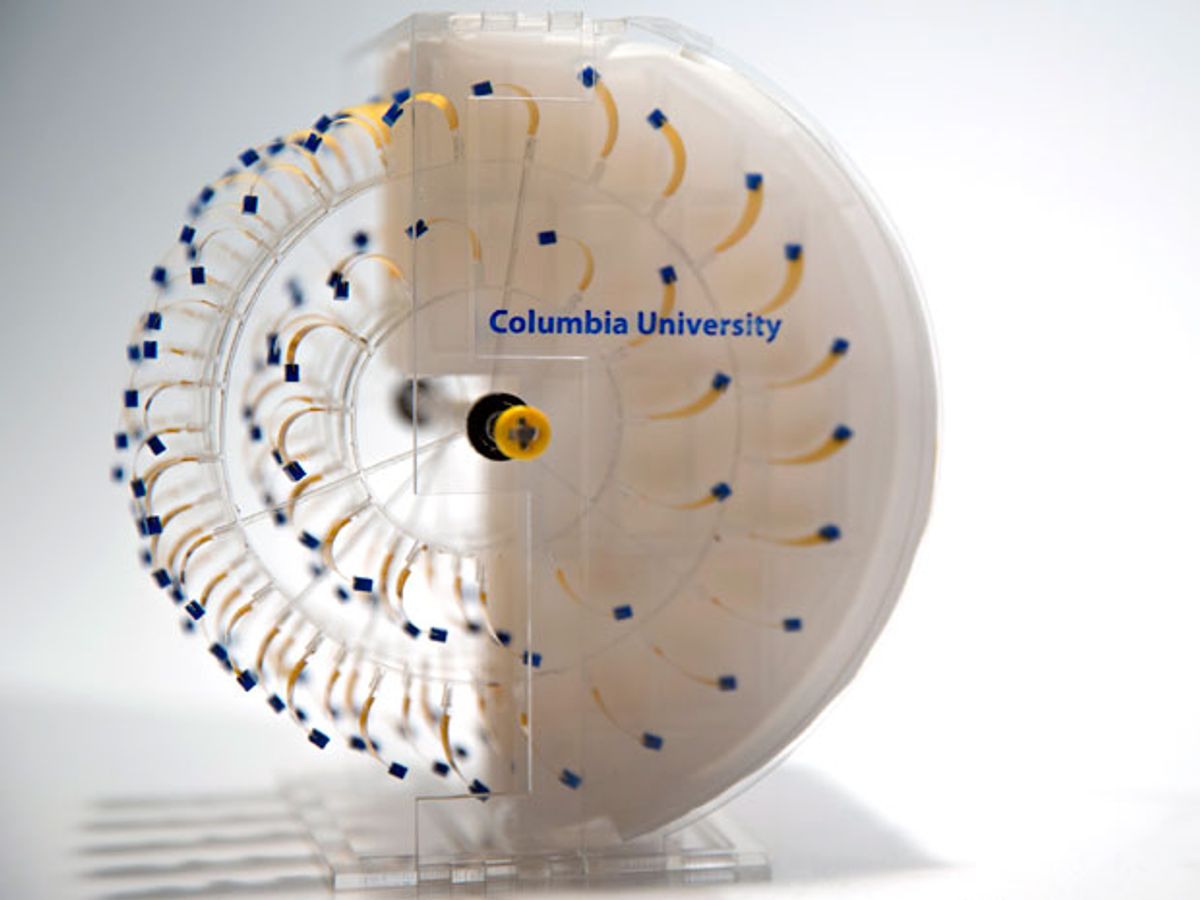Evaporating water can generate electricity, a clean renewable energy source that could help power robots, sensors, and vehicles, researchers say.
Biology regularly uses evaporation as a source of energy. For instance, redwood trees rely on evaporation to pull water from the ground to their crowns. Now scientists at Columbia University and their colleagues have developed two new engines that generate power from evaporation.
The researchers previously found that when bacterial spores expand and shrink with changing humidity, they can push and pull other objects very forcefully, packing more energy gram for gram than many other materials.
As part of their latest work, the scientists built a piston-driven engine by gluing a dashed line of spores one side of a thin, double-sided plastic tape. They did the same on the other side of the tape, but offset the spores so dashes on one side overlapped with gaps on the other. When the air is dry, the tape curves, and if the air is moist, it extends. They call the systems "hygroscopy driven artificial muscles" or HYDRAs.
In experiments, the researchers placed dozens of these spore-covered tapes side by side in a case filled partly with water. Humidity made the artificial muscles expand to open the shutters, allowing the air to dry out. When the humidity escaped, the artificial muscles shrunk to close the shutters, and evaporating water restarted the cycle of motion. This evaporation-driven piston generated enough power to cause a small LED to flash.
The scientists also build an evaporation-driven rotary engine, which contained a plastic wheel covered in tabs of tape that were each covered on one side with spores. Half the wheel sat in dry air, causing the tabs to curve, while the other half sat in moist air, making the tabs straighten. As a result, the wheel rotated continuously, enough to power a small toy car weighing 100 grams.
The researchers suggest HYDRAs could not only help power a variety of machines, but larger versions of the evaporation-driven rotary engines sitting on or above large bodies of water could steadily produce even more power per unit area than wind farms. The scientists detailed their findings online 16 June 16 in the journal Nature Communications.
Charles Q. Choi is a science reporter who contributes regularly to IEEE Spectrum. He has written for Scientific American, The New York Times, Wired, and Science, among others.



